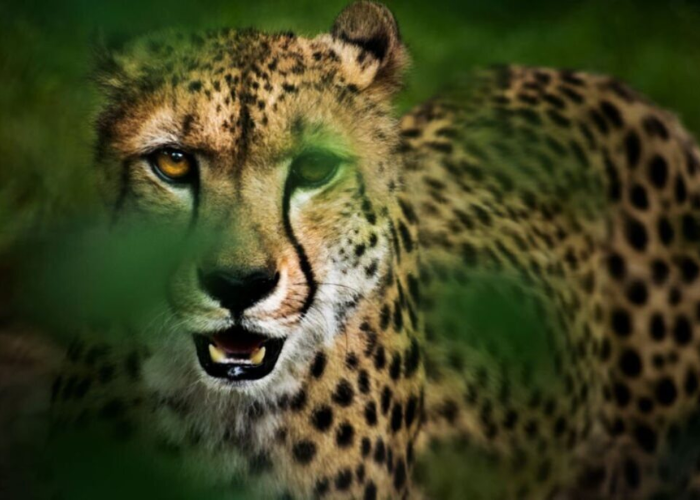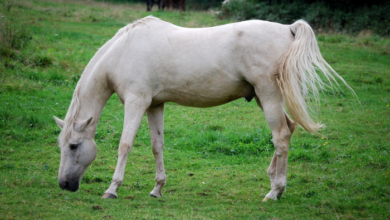
Rajkotupdates.news:Cheetah-Magnificent-But-Fragile-Experts-List-Concerns-For-Cheetahs
The cheetah is an incredible creature, capable of reaching speeds of up to 75 miles per hour, making it the fastest land animal on the planet. Despite its impressive speed and agility, the cheetah is a fragile species.
Characteristics of the Cheetah
The cheetah is an awe inspiring animal, due to its speed and agility. It is the fastest land animal on earth and can reach speeds of up to 75 miles per hour. Additionally, the cheetah’s slender body and specialized claws and pads allow it to turn quickly and accelerate rapidly. These characteristics make the cheetah a magnificent creature, but unfortunately, its fragility has caused experts to list it as one of the most endangered species in the world. The major threats to the cheetah include habitat destruction, human-wildlife conflict, poaching, and a lack of genetic diversity. These concerns make it all the more important to take action now to save the cheetah from extinction.
Magnificence of the Cheetah
The cheetah is a magnificent animal that captivates us with their beauty and grace. The cheetah is the world’s fastest land animal, capable of reaching speeds of up to 75 mph. Not only are they fast, but they also have an array of unique physical characteristics, from their spotted fur to their long tail. They are also unique in that they are the only big cats that can purr. Their magnificence is undeniable, but unfortunately, cheetahs are also incredibly fragile. Experts list numerous concerns that put the future of the species at risk. These include habitat loss, inbreeding, and illegal hunting. It is essential to take action to protect and conserve this magnificent species before it is too late.
Fragility of the Cheetah
The fragility of the cheetah is one of the major expert concerns for this magnificent animal. Cheetahs are the world’s fastest land mammal, reaching speeds of up to 75 mph. However, despite their impressive speed, cheetahs are incredibly fragile and vulnerable to environmental changes and pressures. Cheetah populations have been decimated by habitat loss and fragmentation, as well as human activity such as hunting, poaching, and illegal trade. This has made cheetahs one of the world’s most endangered big cats, with fewer than 10,000 individuals remaining in the wild. Experts are worried that if the current trends continue, cheetahs may become extinct within the next few decades. Conservation efforts are underway to protect cheetah populations and their habitats, but it is an uphill battle and the future of this magnificent animal hangs in the balance.
Experts’ Concerns for Cheetahs
Experts have concerns about the future of the cheetah, a magnificent yet fragile species. With a population of less than 7500 individuals, the cheetah is the world’s most endangered large cat. They are threatened by habitat loss, poaching, and disease, as well as competition from larger carnivores. Human-wildlife conflicts also pose a significant threat and as a result, cheetahs are often hunted and killed. This has caused their numbers to decline drastically, and conservationists are becoming increasingly concerned about the future of this species. The International Union for Conservation of Nature (IUCN) has listed the cheetah on their Red List of Threatened Species, which means the species is at risk of extinction in the wild. Conservationists are working hard to mitigate these threats and to ensure that cheetahs remain part of our planet’s biodiversity.
Conservation Measures Taken to Protect the Cheetah
In recent years, conservation measures have been taken to protect the cheetah, a magnificent but fragile species. As the fastest land animal on the planet, cheetahs are an iconic species, and their future depends on the efforts of conservationists, scientists, and governments. The International Union for Conservation of Nature (IUCN) Red List of Threatened Species lists cheetahs as vulnerable, and experts list numerous concerns for cheetahs, from population declines to illegal trade. Conservation efforts are focused on protecting cheetah habitat, preventing poaching, and raising awareness about the importance of protecting cheetahs. Cheetah conservation efforts include habitat protection, anti-poaching patrols, and captive breeding programs.
Additionally, governments and conservation organizations have developed action plans to protect cheetahs, and organizations such as the Cheetah Conservation Fund have been leading the way in cheetah conservation. Despite these efforts, more work is needed to ensure the future of cheetahs. With a combined effort, we can ensure that cheetahs are around for generations to come.
Conclusion
The cheetah is one of the most magnificent animals in the world, but it is also one of the most fragile. Experts have listed numerous concerns for cheetahs, ranging from habitat destruction to illegal hunting and poaching. The cheetah is also threatened by interbreeding with other species, which results in reduced genetic diversity. The most effective way to help protect cheetahs is to continue to support conservation efforts, both in the wild and in captivity. By working together, we can ensure that cheetahs remain in the wild for years to come.




